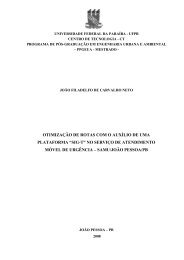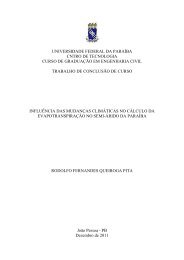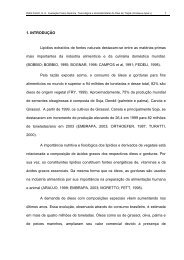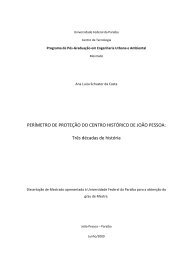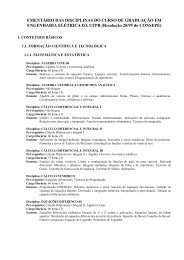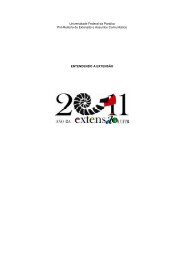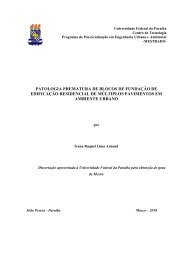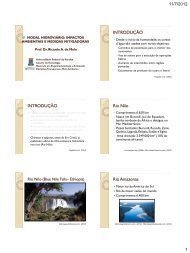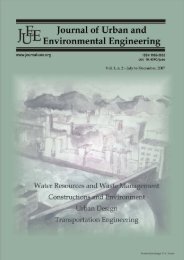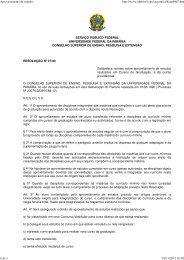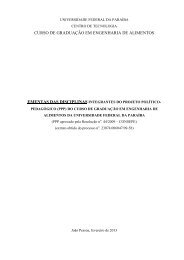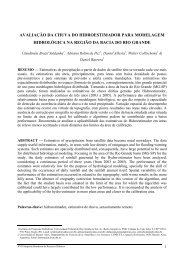editorial team
editorial team
editorial team
You also want an ePaper? Increase the reach of your titles
YUMPU automatically turns print PDFs into web optimized ePapers that Google loves.
Martínez and Poleto<br />
1<br />
J U E E<br />
Journal of Urban and Environmental<br />
Engineering, v.4, n.1, p.1-8<br />
ISSN 1982-3932<br />
doi: 10.4090/juee.2010.v4n1.001008<br />
Journal of Urban and<br />
Environmental Engineering<br />
www.journal-uee.org<br />
LEAD DISTRIBUTION BY URBAN SEDIMENTS ON<br />
IMPERMEABLE AREAS OF PORTO ALEGRE – RS, BRAZIL<br />
Leidy L.G. Martínez 1∗ and Cristiano Poleto 2<br />
1 Hidraulic Research Institute, Federal University of Rio Grande do Sul, Brazil<br />
2 State University of Maringá, Brazil<br />
Received 23 April 2009; received in revised form 15 June 2010; accepted 18 June 2010<br />
Abstract:<br />
Keywords:<br />
Heavy metals, like lead (Pb), are subproducts of industrial activities; however, in recent<br />
years, studies have shown that even in non-industrial areas, elevated concentrations of<br />
this element have been found. In this study, Pb concentrations were measured in 20<br />
composite samples of urban sediments collected in an urban watershed of 4.85 km²<br />
with three types of soil use (commercial/residential, commercial and industrial) in the<br />
city of Porto Alegre, RS, Brazil. Concentrations were determined by acid digestion<br />
(EPA 3050) of the 209 µm, 150 µm, 90 µm, 63 µm and 45 µm fractions followed by<br />
atomic emission spectrophotometry with inductively coupled plasma. Average values<br />
of 178.1 µg.g -1 (± 332); 226.5 µg.g -1 (± 500); 245.2 µg.g -1 (± 454.1); 272.4 µg.g -1 (±<br />
497.3) and 251.5 µg.g -1 (± 322.6) were obtained in the 209, 150, 90, 63 and 45 µm<br />
fractions, respectively. Concentrations of the metals studied were interpolated and<br />
represented geographically using Idrisi © Andes. Results show that the greatest<br />
concentrations are located in the commercial part of the study area, characterized as<br />
presenting high vehicle flow most of the day, with this being considered a potential<br />
source of lead. All concentrations were above that of the local background. Studies of<br />
this type are important because they make the establishment of control targets possible<br />
within sustainable management of water resources, allowing inferences regarding<br />
future pollution scenarios of local water resources.<br />
Urban sediment; diffuse pollution; GIS; lead<br />
© 2010 Journal of Urban and Environmental Engineering (JUEE). All rights reserved.<br />
∗ Correspondence to: Leidy L.G. Martínez, Tel.: + 55 51 3308 6686.<br />
E-mail: luxgm@yahoo.es<br />
Journal of Urban and Environmental Engineering (JUEE), v.4, n.1, p.1-8, 2010



